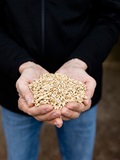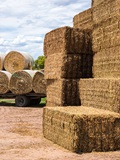South West Victoria
20 May 2020
| Date | SW 23 | SW 22 | SW 5YA |
|---|---|---|---|
| 06-Jan-23 | 292 | 200 | 225 |
| 13-Jan-23 | 300 | 200 | 233 |
| 20-Jan-23 | 313 | 200 | 233 |
| 27-Jan-23 | 323 | 200 | 234 |
| 03-Feb-23 | 323 | 200 | 236 |
| 10-Feb-23 | 333 | 200 | 232 |
| 17-Feb-23 | 333 | 200 | 229 |
| 24-Feb-23 | 333 | 200 | 225 |
| 03-Mar-23 | 333 | 200 | 225 |
| 10-Mar-23 | 333 | 200 | 228 |
| 17-Mar-23 | 338 | 200 | 229 |
| 24-Mar-23 | 343 | 200 | 229 |
| 31-Mar-23 | 343 | 200 | 238 |
| 07-Apr-23 | 343 | 200 | 238 |
| 14-Apr-23 | 343 | 200 | 238 |
| 21-Apr-23 | 343 | 200 | 236 |
| 28-Apr-23 | 345 | 200 | 234 |
| 05-May-23 | 345 | 200 | 234 |
| 12-May-23 | 345 | 200 | 237 |
| 19-May-23 | 345 | 200 | 239 |
| 26-May-23 | 345 | 200 | 250 |
| 02-Jun-23 | 345 | 200 | 253 |
| 09-Jun-23 | 345 | 200 | 253 |
| 16-Jun-23 | 343 | 200 | 253 |
| 23-Jun-23 | 340 | 200 | 273 |
| 30-Jun-23 | 335 | 200 | 259 |
| 07-Jul-23 | 330 | 205 | 260 |
| 14-Jul-23 | 330 | 205 | 259 |
| 21-Jul-23 | 330 | 205 | 260 |
| 28-Jul-23 | 320 | 205 | 262 |
| 04-Aug-23 | 315 | 205 | 264 |
| 11-Aug-23 | 305 | 205 | 261 |
| 18-Aug-23 | 305 | 205 | 249 |
| 25-Aug-23 | 305 | 205 | 250 |
| 01-Sep-23 | 305 | 205 | 255 |
| 08-Sep-23 | 205 | 260 | |
| 15-Sep-23 | 205 | 253 | |
| 22-Sep-23 | 203 | 253 | |
| 29-Sep-23 | 200 | 252 | |
| 06-Oct-23 | 198 | 252 | |
| 13-Oct-23 | 198 | 242 | |
| 20-Oct-23 | 203 | 243 | |
| 27-Oct-23 | 203 | 243 | |
| 03-Nov-23 | 203 | 241 | |
| 10-Nov-23 | 203 | 242 | |
| 17-Nov-23 | 210 | 243 | |
| 24-Nov-23 | 240 | 248 | |
| 01-Dec-23 | 244 | 244 | |
| 08-Dec-23 | 248 | 245 | |
| 15-Dec-23 | 263 | 243 | |
| 22-Dec-23 | 268 | 244 | |
| 29-Dec-23 | 284 | 249 |
Notes:
Change in price is the change since the last report. Hay quoted is sourced and delivered locally, GST exclusive unless stated otherwise. It should be noted that local prices quoted may not be the cheapest available, sourcing it from another region may be more affordable, and buyers are encouraged to evaluate all options. Prices are indicative to a mid-range shedded product, and based on the best indication of market value at the time of reporting. It should be noted there is a wide variation in quality of hay, prices for a mid-range product will not reflect the weighted average of trade. Prices will naturally vary based on the product quantity and quality, buyer/seller relationship and the size of the trade.The hay report has been commissioned by Dairy Australia to provide an independent and timely assessment of hay markets in each dairy region. This report is created using data provided by the Australian Fodder Industry Association (AFIA). It should be remembered that actual prices may vary for quality or other reasons. Whilst all reasonable steps have been taken to ensure the accuracy of the information contained in this report, Dairy Australia disclaims all liability to the fullest extent permitted by Australian law for any inadvertent errors and for any losses or damages stemming from reliance upon its content. Dairy Australia recommends all persons seek independent advice and, where appropriate, advice from a qualified advisor before making any decisions about changes to business strategy.
Commentary
- Light rainfall across the region this week, with most confined to Tuesday 27th September, keeping the remainder of the week clear. Temperatures remain low for this time of the year.
- Lucerne paddocks around Warrnambool and Colac are looking excellent with growth expected to kick off with some sunny clear days. Whilst wet pastures around Grassmere are also looking for sun, they are producing high quality green feed.
- Late sown winter wheat around Hamilton is showing good growth, although wet paddocks are making spraying preventatives against the widespread rust incursions somewhat difficult.
- With more rain forecast and recent wet and cold conditions around Terang, there is a belief that silage cutting will not commence for at least 4 weeks.
- Canola crops around Caramut are looking good with up to 60% flowering; however, they are not as robust as expected. Clover and ryegrass pastures in the same area are supplying good quality green feed to grass lambs.
- Fodder demand is quite flat as most producers are either out on paddocks or are employing mitigation strategies for the wet conditions. There is expected to be movement in the market in the next few weeks as some early season supply becomes available. Fodder is still moving across the border though it is in small quantities. Straw is still being actively traded.
- Slight change to pricing this week.
- Cereal hay: -$5 ($180 to $220/t). Prices decrease this week.
- Lucerne hay: +/-0 ($330 to $380/t). Prices remain steady this week.
- Straw: +/-0 ($90 to $110/t). Prices remain steady this week.
- Pasture hay: +/-0 ($150 to $190/t). Prices remain steady this week.
- Please note: Unless stated otherwise, prices are per tonne, sourced and delivered locally. The price range indicated is for feeds of varying quality with the price range generally indicative of quality of feed. We recommend feed testing and viewing of fodder before purchase to be sure of the quality of feed.

